If you want to grow cucumber plants, you have to learn about their various growth stages. These stages are crucial for a healthy plant. If you grow cucumbers according to the correct schedule, they will eventually produce a fruit that is both edible and nutritious. These stages also include harvesting and pollination.
Cucumber Plant Growth Stages
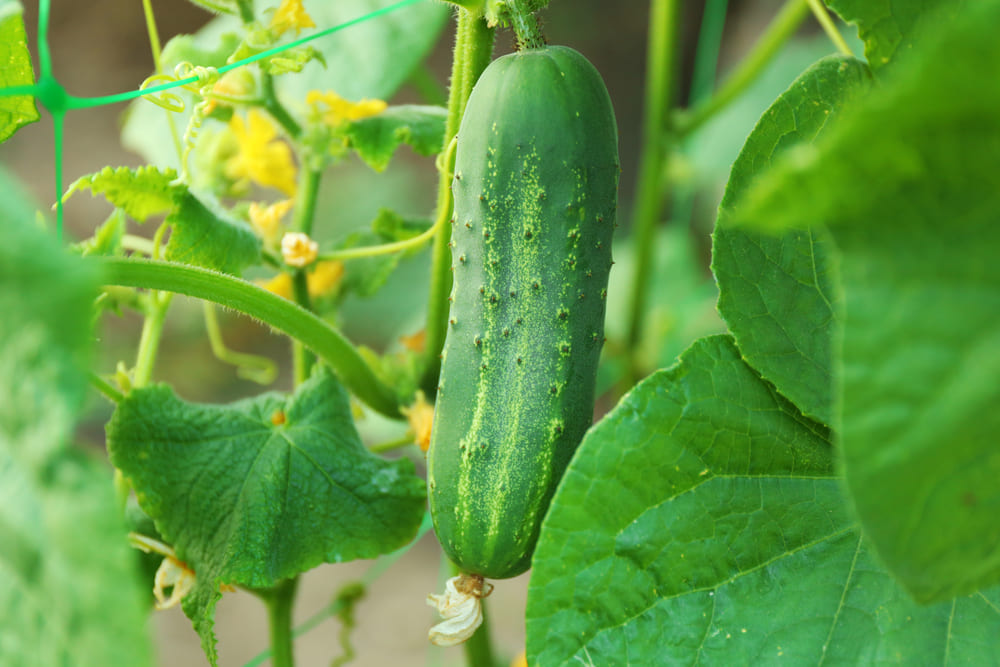
There are various stages in the growth of a cucumber plant. In the first stage, the main stem begins growing erect. Soon, it takes on a trailing habit and spreads like a vine over the ground. Later, the stem develops sympodial branching whereby the lateral buds form at nodes of the plant. These lateral buds then displace the main growing point and take up positions on the opposite side of the leaf. In addition, there are two main types of lateral buds: primary and secondary. Each stem is roughly hairy, has an angular cross section, and may become hollow as the plant grows. In this stage, the stems of cucumber plants bear one leaf at each node.
Cucumber plants go through a predictable growth cycle. When a gardener grows them, they must understand these growth stages in order to ensure the best results. This knowledge will also help them identify any issues as they arise. Cucumbers need warm weather to grow properly, so you should choose companion plants that will support them. You should also provide them with adequate light and water to ensure that they thrive.
Once the first true leaves start emerging, stage I ends. Stage II starts after there are five to six nodes. At this time, the plant begins to develop side shoots from the leaf axils. At each node, flowers will appear. The female flower is located at the base of the plant.
Seed Germination
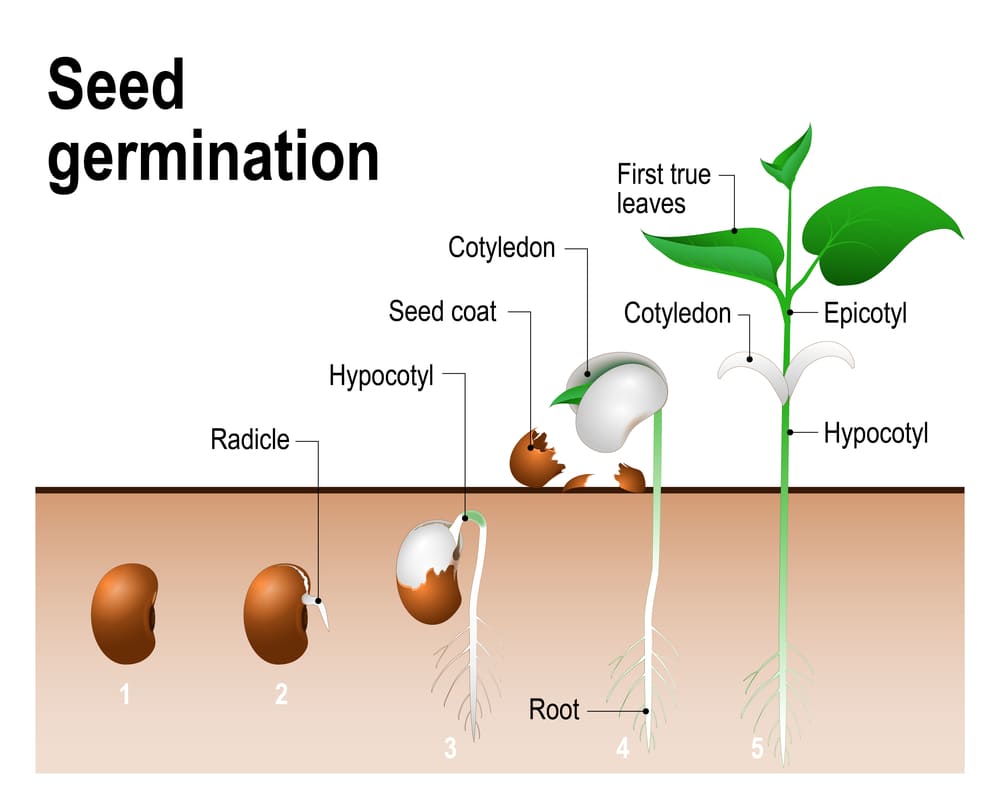
Cucumber plants are easy to grow, and the best part is that the process of seed germination is fast and easy. Depending on the variety, cucumber seeds should germinate in seven to ten days. Once the seedlings germinate, they are ready for planting in the garden. After the seeds are planted, cucumber plants go through several growth stages. This includes the growth stage, flowering stage, and fruiting stage.
Cucumber plants thrive in temperatures between 75 and 85 degrees Fahrenheit. They will not tolerate frost, so it is important to provide moisture and plant nutrients to the plants throughout their growing season. Especially during the fruiting stage, water is essential to ensure the plant grows strong and healthy. Cucumber plants prefer a nutrient-rich, loose soil that is well drained. The soil’s pH should range from 6.0 to 6.5. The soil temperature should also be between 60 degrees F and 65 degrees Fahrenheit before you start seeding cucumbers.
Cucumber seeds germinate in seven to ten days when the air and soil temperature are optimal. In colder weather, cucumber seeds may take as long as three weeks to germinate.
The Seedling Stage
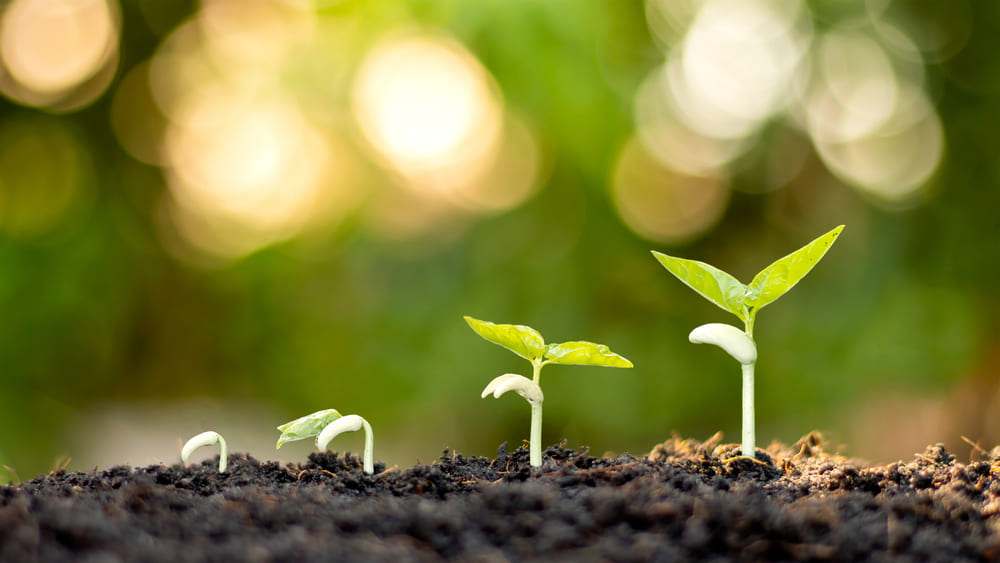
The seedling stage is the earliest stage of cucumber plant growth. As the cucumber plant grows, it develops longer vines and larger leaves. It is important to wait until the vines are about a foot long before tying them together. If the vines are too short, it is best to tie them together using loose ties.
Most cucumbers are monoecious, meaning that they produce both male and female flowers. The female flowers will produce seeds, while the male flowers will produce fruit. As the plant grows, flowering will occur progressively along the nodes. Depending on the cultivar, flowering may be hindered if fruit is developing at a lower node. The size of the cucumber fruit is also related to the number of seeds produced.
Cucumber seedlings will go through three phases: the latent phase, the active phase, and the steady state phase. The latent phase occurs for the first two days following water imbibition. During this time, roots and stems will elongate, and pigment synthesis will begin. This process will produce carotenoid and protochlorophyll.
During the Seedling Stage, the cucumber plant will start developing its vines. It is a good idea to attach the vines to a solid wooden trellis. As the vines grow, they will sprout new leaves and develop tendrils to wrap around nearby supports. The Seedling Stage is also the time when the cucumber plant will flower, if it does. Most cucumber varieties are monoecious, and female flowers will appear approximately 35 days after the seedling stage.
Transplants
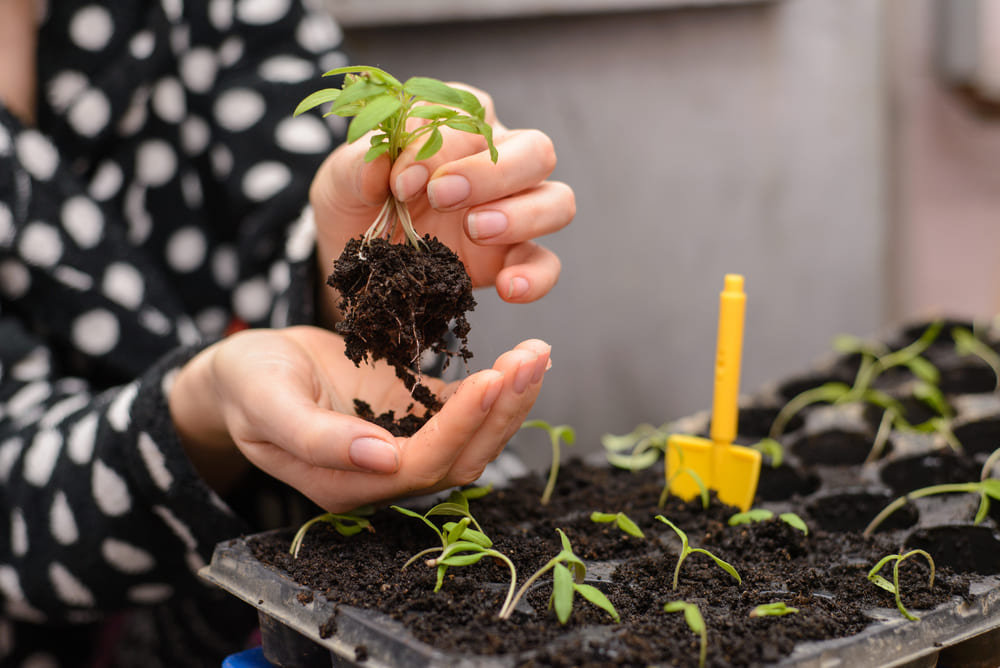
The best time to plant cucumbers is at their seedling stage. Temperatures of seventy-five to ninety degrees Fahrenheit are ideal for seedlings. However, they will need cooler temperatures once they begin to grow into larger plants. If the temperature is too low, cucumber plants will experience blossom end rot. This disease results in a brown leathery patch on the bottom of the fruit, rendering the crop unmarketable. This condition has many causes, but a cold soil temperature may contribute.
Seedlings are not ready for transplanting until they have their first true leaf. This is usually 10 to fourteen days after germination. When transplanting cucumbers, make sure to add plenty of nutrients to the soil immediately after transplanting. The seed starting mix does not contain fertilizer and may not be sufficient.
When selecting the plant for transplant, consider the age of the soil. If it is too young, you may have to add organic fertilizer to it several times during the growing season. You can also use compost tea or fish emulsion to improve the soil’s fertility. Transplants should be kept moist and free of weeds.
Cucumbers are susceptible to various diseases and pests. It’s important to choose varieties that have the best disease resistance. This way, you can minimize the risk of trying a new variety.
Pollination
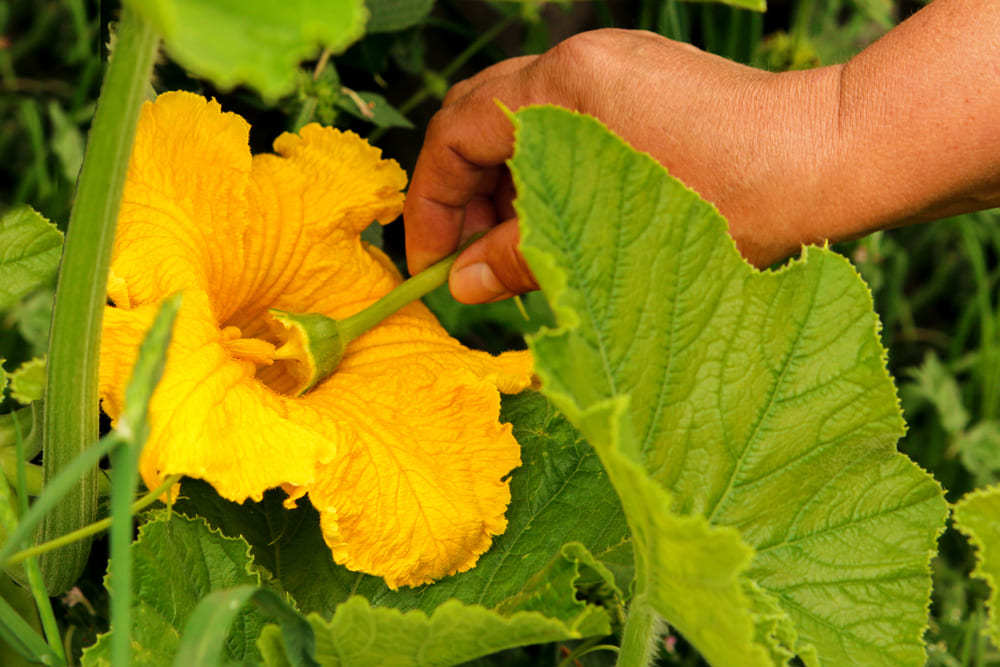
Cucumber plants require a lot of moisture and sunlight to grow well. The female flowers of the plant must be pollinated in order to produce fruit. Male flowers produce pollen that can be easily transferred to the female flowers. Male flowers have shorter stems than the female flowers and fall off the plant after pollination.
Honeybees are a primary pollinator of cucumbers. These bees make 8-10 visits to each flower to produce fruit. Studies in California found that putting three hives in the cucumber plants increased marketable fruit and reduced the harvest time by 33%. In some states, professional beekeepers can be hired to pollinate cucumbers. However, this is not possible in Hawaii.
During the cucumber plant’s early growth stages, thrips can cause considerable damage. The most severe damage is done to the leaves. Thrips will cause the edges of the leaves to curl downward. This damage can be remedied by periodic light dolomitic limestone applications.
Fertilization

Fertilization for cucumber plants needs to be customized to the specific stage of their growth. There are several options available for this. For example, organic fertilizers are great options for growing cucumbers because they contain nutrients that are readily absorbed by plants. However, it is important to choose the right fertilizer for your plants, as a wrong fertilizer may damage them. Organic fertilizers are easy to use and require less work than inorganic fertilizers. In addition, they can promote larger yields and plant health.
Fertilization for cucumber plant growth stages starts from planting time, followed by additional feedings to encourage vines and fruit development. To start with, choose a balanced fertilizer like Pennington UltraGreen All Purpose Plant Food 10-10-10 or a specially formulated fertilizer like Lilly Miller MORCROP Tomato & Vegetable Food 5-10-10. Apply fertilizer to the soil surface and cultivate the mixture in. The first feeding should take place a week after planting, but be careful not to over fertilize, as this can encourage leaf growth instead of fruit.
Fertilization for cucumber plants also depends on the soil type. To grow cucumbers successfully, choose soil with a pH between 6.0 and 6.8. If the soil is below this level, you need to amend it with compost. Organic matter amendments will lighten heavy clay soils and improve drainage.
Flowering and Fruiting Stage
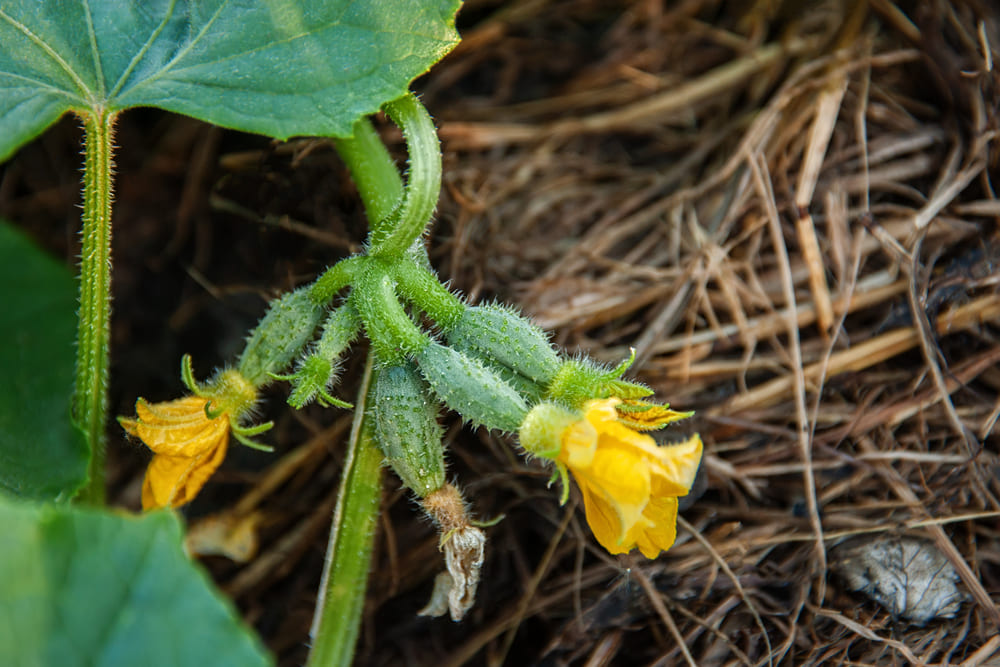
The Flowering and Fruiting Stages of cucumber plants should be carefully monitored to produce the best results. Ideally, cucumber plants should reach the harvesting stage at about 50 to 70 days after planting. Cucumber plants prefer temperatures between 70 and 90 degrees Fahrenheit. However, if you want to grow the best cucumbers, it’s best to start your seeds indoors to avoid frost, and then transplant them outside in late spring or early summer.
The main stem of a cucumber plant grows erect at first, but soon adopts a trailing habit and stretches over the ground like a vine. It develops sympodial branching, with lateral buds that develop at the nodes. These laterals may have a primary or secondary bud. The stems are generally hairy and angular in cross section, and their tips curl around a support.
Cucumber plants require plenty of light and fertile soil. Soil test results are available at county Extension offices. A fertilizer such as 5-10-10 should be applied to the planting bed at a rate of three pounds per 100 square feet. To encourage fruiting, you can side-dress with 33-0-0 in the first two weeks after sowing. Ideally, the fruiting stage should begin when at least 25% of the plants have started to flower.
To produce the best fruit, cucumber plants require pollinators to carry pollen to the female flowers. Avoid pesticides or fungicides during the flowering stage as these could kill or interfere with the pollination process. The fruiting stage of a cucumber plant begins 50 to 70 days after the seeds have been sown. In addition, cucumber plants need fertilization and regular watering to produce fruit.
Harvesting Stage

Cucumbers are semi tropical plants that respond to high temperature and humidity, continuous water supply, and a balanced nutritional environment. As long as pests are kept in check, they can grow very fast. Cucumber plant growth is mostly done through its main stem, laterals, and tendrils. This means that you will have to prune the plants often to prevent them from growing too large.
In order to ensure that cucumbers are not damaged during the harvesting stage, keep the soil temperature at around 60 degrees. This temperature is important, because cold soils can cause blossom end rot, a condition in which the fruit lacks calcium. Blossom end rot results in a brown, leathery area on the bottom of the fruit, rendering it unsellable.
Cucumber plants need a constant supply of water, and they require approximately one inch of rain each week. During dry spells, it’s important to make sure the top two inches of soil stay moist at all times. Unlike other vegetables, cucumber plants can only produce fruit once. When the cucumber growing season is over, they will die off. Therefore, it’s crucial to start new seeds each year.
As the cucumber plant grows, it will develop longer vines and more leaves. Wait until the vines are at least one foot long before tying them up. You should use loose ties to tie them up to avoid them getting tied and developing diseases.
How Do They Grow?
Growing cucumbers isn’t as hard as you might think. The secret is understanding the different stages of plant growth and maintaining optimal conditions for each. Cucumbers are easy to grow, but they do require a little extra care. In order to make sure your plants get the nutrients they need, it’s helpful to follow some general guidelines.
The first step is choosing a growing location. Decide where you’d like to grow your cucumbers. It’s also a good idea to decide how many you’d like to grow. For example, if you want to grow a few cucumbers in a pot, you’ll want to choose a location that gets lots of sunlight. The vine-type cucumbers are best grown in pots, since their roots are much longer than those of bush-type cucumbers. Also, if you’re growing cucumbers in a container, make sure to provide drainage holes so that your cucumber plants can get the moisture they need.
Cucumber plants should be started indoors at least 10 to 14 days before you plan to plant them outside. You can use peat pots or pellets to start your plants. You should wait until the threat of frost has passed before transplanting them outdoors. If you choose to plant your seeds directly in the ground, you should do so in hills of four or five seeds. If you choose to plant your cucumbers on a trellis, you should space them at least three feet apart.
Cucumber seedlings need lots of light and consistent watering. They should receive at least eight hours of sunlight per day and should never dry out. After the first leaves appear, feed them with a half-dose of organic liquid fertilizer. If you grow cucumber plants indoors, you should consider using grow lights or fans to ensure adequate air circulation.
How Long Does It Take Cucumber Plants to Produce?
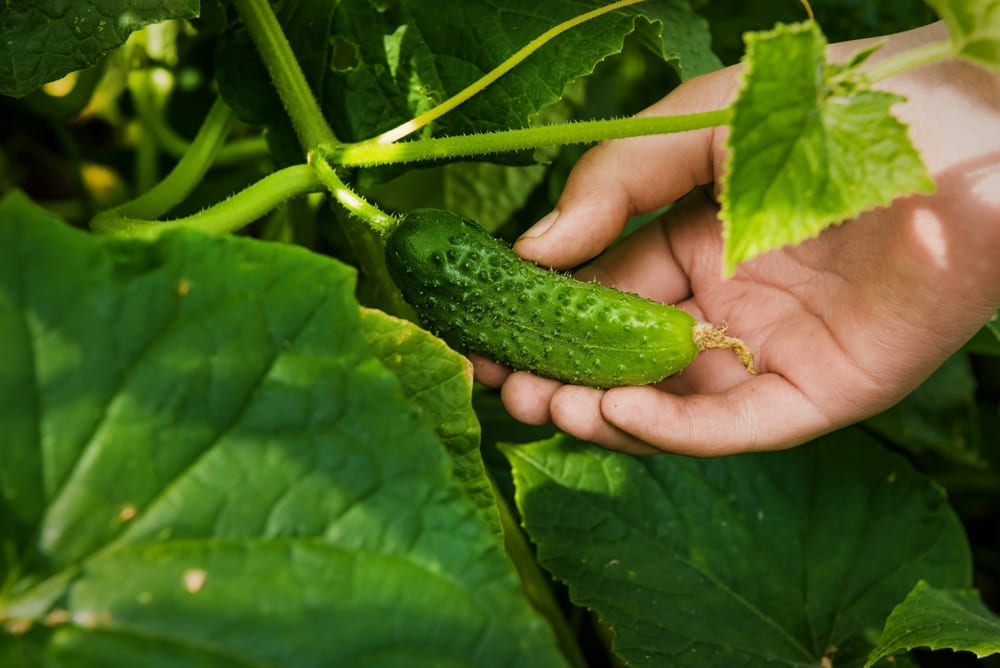
To start growing cucumbers, make sure you have the right soil and climate. Cucumbers grow best in a sunny location with a pH level of 6.0 to 6.8. They are easy to grow and require minimal maintenance. Cucumbers prefer well-drained soil and need about an inch of water a week. You can fertilize cucumber plants with water-soluble plant food. Straw mulch is also a great addition to any garden because it keeps plants clean and helps prevent slugs and beetles from munching on the fruit.
The time it takes to harvest cucumbers depends on the variety. Cucumbers should be picked when the outer skin is green. They are prone to turning bitter if harvested later. Some growers sow seeds in stages so that they can harvest cucumbers when they are ready. Typically, the growing season lasts from late spring through the summer.
The soil should be well-drained and have a pH between 6.0 and 6.5. Cucumber plants do not tolerate frost, so it’s important to provide ample moisture and nutrients throughout the growing season. It’s also important to water cucumber plants frequently during the fruiting stage. Cucumber plants will mature in about fifty to seventy days, from seeding to harvesting.
Cucumber plants produce multiple fruits over the course of several weeks. As a general rule, one cucumber plant will yield about 5 pounds of fruit. To increase the yield, use organic pesticides and rotate the crop with other types of crops. It’s also important to pick the fruits when they reach ripeness. Picking fruit regularly will encourage the plant to grow and produce more.
Cucumber plants have two types of flowers: female and male. The female flower will produce a cucumber once the male flower has finished pollinating. Female cucumber flowers develop in about 55 to 70 days. Male flowers open a few weeks before the female flowers and will drop from the vine. Female flowers are covered in pollen, and a female flower will develop into a cucumber fruit in about 70 days.
How Long Does It Take to Grow After Flowering
To grow cucumbers, you must start from seeds. They need a good soil temperature of 70 degrees Fahrenheit to flourish. It is best to start your seeds indoors at least three weeks before transplanting them outdoors. You can sow the seeds in spring or fall and wait until the soil has warmed up to 70 degrees. When the first seedlings appear, water the seeds well and side-dress them with compost tea or manure.
The flowering period of cucumbers can last 35 to 55 days. After the first male flower appears, the female flower follows about 10 to 12 days. The female flower is the only part of the plant that produces fruit, so you should wait until it is fertilized to reap the benefits of pollination. However, keep in mind that pollination is affected by poor weather and use of pesticides. For instance, cold, rainy weather reduces bee activity and results in less fruit set. Also, insecticides can harm the pollinators, which can make your cucumbers less productive.
Cucumbers need warm, sunny conditions. The ideal temperature range is 75 to 85 degrees F. They don’t tolerate frost and must be fed with moisture and plant nutrients throughout the growing season. Water is especially important during the fruiting period. Loose soil with lots of organic matter and a pH of 6.0 or 6.5 is ideal. Before seeding, the soil should be at least 60 degrees F and should be moist but well-draining.
Water your cucumber plant every week. A cucumber requires about one inch of water per week during the growing season. Be sure to water deeply, but not so much that the leaves dry up quickly. Avoid over-watering, as this can encourage vine growth and deprive it of the energy it needs to produce fruit.
When To Pick Cucumbers?
Cucumbers mature at different rates, so you should know when to pick them. Picking cucumbers when they are still firm and green is the best option. Otherwise, they will become bitter. Also, cucumbers that develop large yellow spots are best avoided, as they do not taste very good. It is essential to know when to pick cucumbers so you can maximize your crop.
Cucumbers are easy to grow and harvest, but they do need regular attention to avoid damage. They grow in bushes or vines, and you should check them daily. It is important to have an eye for cucumbers, since they can be hard to spot in bushes and vines with dense foliage.
Cucumbers are best picked when they are six to eight inches long, have a firm consistency, and are uniform in color. To determine their ripeness, look at the seed packet or compare the cucumber to a few examples. Picking cukes at this stage is best for pickling or slicing.
Picking cucumbers should be done daily or every other day during off-peak season. Cucumbers should be cut from their vines with a sharp knife or pruners. Be careful not to pull too hard, as this could cause damage to the plant. When pickling cucumbers, make sure to examine them closely for stunted growth or rotten ends. Discard those that are past their prime. If cucumbers are too large or yellow, they are too far gone and should be removed.
Picking cucumbers can be done as early as eight days after the first female flowers appear. However, some varieties of cucumbers are ready sooner than others. Picking cucumbers too early will result in them turning bitter and losing their fresh taste. If you are unsure of when to pick cucumbers, refer to the seed packet instructions.
Conclusion
Cucumber plants produce three kinds of flowers: the male or staminate flower, the female or pistillate flower, and the hermaphrodite flower. These flowers differ in structure, with the pistillate flower having thin pedicles and a large ovary at the base with three chambers and three stigma lobes. The staminate flower, on the other hand, has three stamens and grows in clusters. The staminate flower produces round fruits.
In order to study the cucumber plant’s water needs, researchers studied the cucumber plant’s water extraction patterns during different growth stages. They found that when grown in well-drained soil, cucumbers extracted water from the soil at intervals of 15.2 cm before and after irrigation. These results revealed that cucumbers tended to use water in the upper 90 cm of soil.
Understanding the cucumber plant’s growth stages is critical to proper care. It helps you determine when to transplant, handle, and harvest the plants. Knowing the growth stages of your cucumber plants will help you plan the best time for harvesting, and it will help you avoid harvesting bitter-tasting cucumbers.
The most critical growing stages of the cucumber plant include the greening phase and the blooming stage. These two stages of growth have different nutrient requirements. In a greenhouse, cucumber plants need to be in a favorable growing environment so that they can receive enough nutrients. It is important to remember that cucumbers are sensitive to temperature and humidity, so it is important to monitor them closely. In addition, cucumbers are susceptible to several diseases, including cucumber mildew, which can appear on leaves and fruit. Properly managing these diseases can help you to maximize yields.
In addition to fertilizing the soil, cucumber plants need water, and they need about eight hours of sunlight each day. If you are not able to provide these conditions, you should use soil amendments to improve the soil’s quality. Mulching the soil with composted green waste can improve its holding capacity and supply nutrients to your crop. However, you need to be careful about the manure source that you choose.
